
“As kids, Marc and I couldn't find
the support that we needed to give back.
So we set out to help others,
to show them that it doesn't have to be
a struggle to do good. That's our purpose
at WE: to make doing good, doable.”
Part One: Chapter 2
Breakfast and a Wake-Up Call
By Craig Kielburger
By any measure, my high-school experience was unusual—on those rare occasions I attended. One year, I logged fewer than 30 days in school. I repeatedly failed Grade 9 gym for not showing up. In my comparative religion course, I was docked marks for not properly footnoting a quote from the Dalai Lama. “But I can't cite a written source,” I had to protest. “That's what he told me!”
There has always been a negative correlation between WE's success and my life's sense of normalcy. As a teen, I could quote conversations I'd had with world leaders at global forums or development seminars, but I couldn't name a popular song or an Oscar-nominated movie. My classmates went on about a show called Dawson's Creek, which was “exactly like our lives!” I watched one episode: it wasn't. I was oblivious to conventional teen angst, being so busy with WE Charity (formerly Free The Children). Balancing a financial statement was more familiar to me than my math textbook. I fired my first employee before I ever broke up with a girl. Looking back, it was like living in a made-for-TV coming-of-age movie. A childhood adventure story about traveling to 50 countries before reaching adulthood, following a personal passion for a social cause, and learning from some of the world's greatest mentors while my friends and I built a charity.
The staff were a bunch of seventh-grade students in a Toronto suburb, determined to raise awareness about the evils of child labor on the other side of the world. Today, WE is a global movement that's empowered more than one million people to lift themselves out of poverty through sustainable development. At home, we empower millions more with service learning programs that enable them to discover their own cause, write their own journey of impact, and make daily choices that better the world. There have been many obstacles along the way
WE Charity launched more than twenty years ago with limited assets: a dozen kids around a kitchen table, a fax machine, and a Commodore 64 computer.
and more lessons learned in two decades of social entrepreneurship than anyone needs in a lifetime. One of the main reasons we wrote this book is to give you the blueprint and toolkit to make your own impact without having to repeat our mistakes. As kids, Marc and I couldn't find the support that we needed to give back. So we set out to help others, to show them that it doesn't have to be a struggle to do good. That's our purpose at WE: to make doing good, doable.
When I'm asked to describe “when it all began,” I think of April 19, 1995. Back then I liked to begin my day with a bowl of cereal accompanied by Calvin and Hobbes, Doonesbury, and the Wizard of Id. But that morning, I never got to the comics because I couldn't tear my eyes away from the front page. A small boy was looking out at me defiantly, his arm thrust in the air and his fist clenched. The headline announced: “Battled child labor, boy, 12, murdered.” It was his age that struck me. I skimmed the paper every day in search of the comics, which means I'd ignored plenty of other distressing headlines. But this kid was my age. The article said Iqbal had been sold into bonded labor, chained to a carpet loom, and shot down in the street after he escaped his captors.
Until that moment, my life had been pretty ordinary: TV, music, basketball with friends, Boy Scouts, and Taekwondo; I went to church every week and played floor hockey on Sunday afternoons. And I was a shy kid. Growing up, I suffered chronic ear infections and underwent various surgeries. I didn't hear certain sounds properly, and as a result, didn't recreate those sounds very well. Rs gave me particular trouble, so the name Craig was a trial. I didn't know it then, but Iqbal had just altered the course of my life.
As I stared back at the photo of Iqbal, I knew I wanted to help other kids like him, but I didn't know how. Over the next few days, I reached out to a few charities, making several calls to established nonprofit and human rights groups. Most of them didn't have time for a tween with no disposable income. At one well-known international children's charity, the guy who answered the phone asked if I knew where my parents kept their credit card. They wanted a Visa number, not my time. As a kid, this upset me, and frankly, as an adult, it still would. Old-school charities don't empower people to act. Instead, they make people feel guilty and then offer to alleviate that guilt by extracting their money. That transaction is usually the full extent of a supporter's involvement in the cause. When no established charities would help me, I turned to people who would. I asked my teacher Mr. Fedrigoni if I could make a presentation to my class.
On the bus to school, I clutched Iqbal's story in sweaty palms, my nerves getting the best of me. Terrified, I told my class about Iqbal, that he was just one among millions of enslaved children in the r-r-region. I said I was going to start a student group to investigate child labor, blurting out: “Who wants to help?” And then my stomach dropped. Middle-school kids don't make for the most forgiving audiences in the best of circumstances, and now a less-than-popular kid with a speech impediment was asking them to talk about world issues during their free time.
Eleven hands shot up. Never underestimate the desire of kids to make a difference. And there was one absentee vote that I'd already counted. My big brother, Marc, was instrumental in helping us get started. He was in high school, and thus by far the most qualified to write letters of protest to international governments.
The Tween's Guide to Starting a Charity
After my class presentation, we held our inaugural meeting during lunch period. Later that day, we set up an office in my parents' garage and installed filing cabinets, a bookcase, and a table, where we would build lemonade stands out of corrugated cardboard. The imposition on our parents and their home would soon extend far beyond the use of old office furniture.
We owe our parents a huge debt of gratitude. In the early days, they chauffeured us everywhere, taught us basic accounting, and offered in-kind donations, like frozen lasagna, which had a life expectancy of about four minutes. In the years ahead, my parents turned the entire house over to our fledging charity as office space, and they moved to the home that had belonged to our late grandfather. At our headquarters, pizza boxes stacked up like Lego towers; the backyard pool went wild and green and attracted frogs. It was a wonderful, chaotic place, a more charitable version of Lord of the Flies. Our parents turned their lives upside down for us. More than that, they gave us their trust and respect, enough to explore the world and our passions, something for which we will be forever grateful.
You can see our chaotic home in a clip of an early documentary about our organization, narrated by me: Click for video
But I'm getting ahead of myself. The first turning point that grew us from a tiny after-school club to a global charity was a fateful trip. I harassed my mother until she let me travel to Southeast Asia to meet child laborers, and to find a charity on the ground that we could support.
“You're only 12,” my mom had said with a sigh. “You've never even been on the subway alone, you're not going to Asia.” It was classic mom logic. Eventually, after many months of pestering, finding a suitable chaperone in a family friend who was 25 at the time, and shoveling driveways to fund my journey (thank God for Canadian winters), Mom relented to the idea of me and our family friend visiting potential charity partners in Asia. That journey would have profound impacts on the rest of my life.
See me at the start of my WE journey. Watch a clip from a documentary filmed during my trip: Click for video
About seven weeks into my journey, I read in the newspaper that Canada's Prime Minister at the time, Jean Chrétien, was traveling to Southeast Asia with a trade delegation. Our organization had twice asked Chrétien to meet with me to discuss child labor, to no avail. This time, our itineraries happened to match up. The newspaper had printed the name of Chrétien's hotel in Delhi, so we decided to write a letter to him and slide a photocopy under the door of every guest room, hoping to reach him. Before I made it to every floor, an amused security guard stopped me, but gave me the idea to hold a press conference. He explained that the trade delegation press corp was staying at the same hotel. Why not write them a letter instead? Looking back, I'm thankful for his cease and desist and his much better idea.
“You're only 12,” my mom had said with a sigh. “You've never even been on the subway alone; you're not going to Asia.”
The next day, we found two dozen senior political reporters, curious about a Canadian kid who claimed to have something important to say. They looked every bit like journalists, with flip pads and equipment weighing them down. I spoke briefly, then introduced the child slaves that I had met during my travels. Mohan, a nine-year-old boy, had been working twelve-hour days in a carpet factory since the age of five. He told the press about going without food or bathroom breaks. He was often beaten for falling asleep on the job. Another boy, Nagashir, could barely speak from injury. He wasn't sure when he was sold into slavery at the factory, but he imagined he was around seven. Then 14, he told the story of an attempted escape—not for himself, but for his younger brother. They were both caught and badly beaten. Nagashir was branded with a hot iron. He lifted his arms and turned his neck to reveal the scars from where the iron had cinched his throat, making his speech painful and difficult.
It wasn't until a few days later, on the next stop in my travels in Karachi, Pakistan, when I learned that our impromptu news conference had caused a major stir, both with the Prime Minister and my mom. Already upset with me for not calling enough, Mom was shocked to see me at the top of every Canadian newscast and even CNN. Calling collect from Asia was a laborious process at the time, and it would be a few years yet before Internet cafés made their debut. When I finally called home, Mom had no time for small talk.
WE
It's our mission, our community, and our name.
Our purpose? WE makes doing good, doable.
WE is not a traditional charity with the old-school model of a one-off donation at tax time. The WE Movement makes changing the world part of everyday life.
Our social mission launched in 1995 when I was a 12-year-old cold-calling charities to ask how I could help. When “send money” was the only answer, we realized that people needed more accessible and meaningful ways to make an impact. Small actions could add up to big change, if only people knew what to do. We had an epiphany: to launch a movement of ordinary people and create a tidal wave of positive social impact through seemingly small, daily choices. Our mission was born: WE makes doing good, doable. No one—12 year olds or otherwise—would feel powerless.
WE became our driving mantra in the early 2000s. In 2006, we published Me to We: Finding Meaning in a Material World. When the book became a New York Times bestseller, we realized that millions of people felt connected to WE.
Today, the WE Generation is embracing choices that better the world. It is more than an age demographic, but a shift in perspective about our daily choices—how people give, shop, travel, live, work, and use technology. The WE Community is comprised of over four million people who actively engage with this movement every year through WE Schools, WE Families, WE Companies, and WE Living.
Learn more about WE's unique programming: Click for video
WE Charity helps people discover the causes they're passionate about to drive social change locally and globally. Our domestic programs in North America and the UK provide resources and support to enable millions to take action and make a difference in their communities, helping more than 2,500 charities. On a global scale, our WE Villages sustainable development model helps people lift themselves out of poverty in developing countries by providing education, water, health, food and opportunity. Our social enterprise ME to WE offers socially-conscious products and life-changing experiences which transform consumers into world-changers. All ME to WE products financially support the work of WE Charity, making a massive impact by giving back.
WE Exists to Help You on Your Own Journey to Change the World.
 WE Families engages millions of parents, extended family, and children to teach the next generation to care and contribute. For more about WE Families: Click for video |
 WE Schools provides 15,000 partner schools with free, classroom-ready service learning programs and curriculum, and brings WE Day to cities around the world to celebrate young leaders. For more about WE Schools: Click for video |
 WE Companies partners with Fortune 500 companies, startups and mom-and-pop shops, offering turnkey programs that connect partners' employees and customers to causes. |
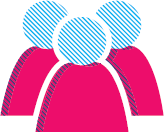 WE Living empowers consumers at 12,000 partner retail stores with socially conscious products and experiences to better the world. |
The WE Movement has hundreds of staff, as well as coaching resources to support you to take action on the service cause of your choice. WE also invites you to engage in our own local and global programs. For example, internationally, our WE Villages model enables sustainable development in Asia, Africa, and Latin America, empowering one million people around the world, and welcoming thousands of global volunteers.
We believe that people are looking for authentic, purpose-driven means to make a difference. Ever since a bunch of kids convened in the suburbs over twenty years ago, WE has empowered millions to make doing good, doable.
“Where are you!? I saw you on television—have you lost weight?! What have you eaten today?!”
After much reassurance from me, she followed up casually: “By the way, the Prime Minister is trying to reach you.”
Talk about burying the lead.
It turns out that the next stop on my itinerary also happened to match with his. We met in Islamabad, and after a 15-minute conversation with the Prime Minister, he promised to raise the issue of child labor with the business delegation traveling with him, in addition to the President of Pakistan.
For clips of the press conference and a glimpse of my meeting with the Prime Minister: Click for video
When I returned home, a crush of journalists waited at the airport. 60 Minutes trailed me through my high-school cafeteria. Like a scene out of an old (pre-Internet) movie, the mail carrier delivered bags overflowing with letters of encouragement, and messages from other children who wanted to join this organization. Single dollar bills from allowance and birthday money were sent by kids who wanted to help. We soon had raised enough money to build a rehabilitation center for freed child slaves, along with 22 primary schools, in Asia.
Our tiny charity had started with a leap, but the real learning curve was still to come.
Schooled by Oprah Winfrey
The Oprah Winfrey Show asked me, at 16, to appear on an episode featuring young people making a positive difference in the world. Oprah, being Oprah, had prepared a surprise for each guest. I was introduced to a young New Jersey boy whose school had held a fundraiser; he presented me with a giant novelty check for US$3,378 to help build a school in Nicaragua. We both turned to Oprah to wrap up the segment.
“You know what?” she announced. “I want to build a hundred schools with you.”
After interventions from lawyers who tried to dissuade her (she hadn't fully vetted us, yet she'd made a very public promise), Oprah had made up her mind. This would be her first major overseas investment. A few days later Marc and I flew back to Chicago to meet with Tim Bennett, the president of Harpo Productions at the time, who warned us: “You have no idea what's about to happen when this goes to air.” Then he asked us three questions: “Do your schools have paraseismic engineers? Do you do currency hedges to make sure fluctuations don't affect the final price of your projects? Do you have a third-party governance and evaluation system in place?” Marc and I looked at each other—para-what? Clearly, we did not fully understand the power of Oprah. We had a passionate group of young people and the eyes of Oprah's viewers upon us, but we didn't really have the infrastructure to support her generosity. We quickly learned how Oprah ran her empire. She and her team were the ultimate business professionals, and in return for her investment, they acted like venture capitalists who expected us to grow and deliver scalable social change in a model similar to a successful tech company, not a fledgling charity.
Suddenly, we had the equivalent of what the for-profit industry would call “series A/B/C” funding rounds to secure world-class designers, builders, and engineers. Our school buildings have since survived earthquakes in Haiti and China. Marc and I reported to Oprah's board of directors, which she chaired, on risk assessment, cost evaluation, long-term sustainability—factors we didn't realize applied to charitable leadership but have since become hallmarks of all our programming. With me in high school and Marc a college undergrad, we were getting schooled at the unofficial Oprah Winfrey MBA program. At the time, it was all a bit terrifying. We would leave board meetings drenched in sweat and searching for a dictionary.
When we first stood in front of Oprah's team, we were kids, earnest young people with a desire to “help children.” Although we had no shortage of good intentions, we quickly learned that it's much harder to achieve lasting impact. Over time, we understood the difference between doing good and making scalable, sustainable change. We learned how to act on the best strategies to streamline efficiencies and reduce costs to achieve the greatest impact-per-dollar, lessons and tips we'll discuss in Part Three.
In the beginning, before Oprah's intervention, we funded Bal Ashram, a counseling center for freed child slaves in Rajasthan, India. Raids meant descending on brick kilns or kicking down doors to back-alley factories to find dark rooms filled with bewildered children; rescue workers led them dazed into the sunshine. Our mission back then was to free child slaves, which we took fairly literally to mean removing them from the workplace. But when we started to “free” the same children again and again, sold back into slavery, we realized we'd become a stop-gap measure. After consultations with locals, we shifted tactics. We started to build and repair schools, in order to provide the skills and economic opportunities that would become alternatives to bonded labor and raids. Each new school was a cause for tremendous celebration. Every child in the village streamed through the doors and sat two and three to a desk waiting for class to start.
It was around this time that Oprah started to fund us, and challenged us to more rigorously measure the effectiveness of our programs. So when we returned to our schools months later on follow-up visits, we found empty seats. Girls were dropping out in virtually every country in which we worked. We could build a school, but we couldn't keep it filled with students.
The first graduating class at WE Charity's Kisaruni All Girls Secondary School was a huge milestone: Click for video
In many developing communities, girls make daily treks to fetch water, often miles away, a task that can consume an entire afternoon—the school day. So we built rainwater catchment systems, dug boreholes, and installed water pumps next to our schools, so girls could attend class and return home with water.
Still, some of our best students missed long stretches of schooling. They were battling bouts of malaria or tuberculosis; others dropped out when their parents fell ill. This was the genesis of our health programming, which now includes mobile and permanent clinics and hospitals, along with wellness education.
Once we had full classrooms, some of our students couldn't focus. It's tough to solve science or math equations if you haven't eaten a proper meal in several days. Malnutrition in some of our overseas partner communities is extreme. We implemented school lunch programs and planted vegetable gardens on campuses, making agriculture and targeted drip irrigation part of the curriculum. Children now learn farming techniques at school from local specialists, taking the findings home to their parents' fields.
When people are healthy with full stomachs, free from the burden of carrying river water for miles, they have more time to work and provide for their families. Our final pillar of opportunity helped create alternative income programs, business education training, and community-led micro-loan groups. Tens of thousands of small businesses were seeded and grew, giving villages the tools to lift themselves out of poverty through employment.
We learned that we needed to help communities become sustainable and economically self-sufficient. With this five-pillar development model, partner communities become self-sufficient after about five years. It's not a hand-out, but a hand-up that breaks the cycle of poverty.
Learn more about WE Villages and its five-pillar development model: Click for video
That watershed realization led to a cycle of constant innovation and learning. Eventually, we would further hone our geographic focus to countries in which we could make the most impact.
We have since realized that when it comes to doing work in developing countries, especially in some of the poorest and most politically challenging of the world, there is still much to learn. The hardest part of development is not identifying what works through research-driven models, but operating within cultural contexts that are often vastly different, and complicated by extenuating circumstances of dire poverty and weak rule of law.
We know, of course, that donor and business partners in the West expect charities to be run like solid businesses with efficiency, transparency, and sustainability. Building world-class processes and procedures in nations with nascent democracies is the most challenging aspect of our work, yet at the same time some of our most important.
The first 20 years of our international development work was focused on researching and developing the model to lift people out of poverty. The next 20 years will be focused on long-term succession planning, building local capacity, and scaling models for impact.
If any of these solutions seem obvious or to have appeared too quickly, keep in mind I've condensed years into a few hundred words. And at every stage, we got flak from consultants and old-school charity experts who warned us that our holistic model defied the 30-second charity soundbite plea to attract donors. Anything more is too complicated, they said. Tell people you just build wells. Tell people you just build schools. How could we do that, knowing that building schools isn't enough on its own to create sustainable change?
Oprah was the first to teach us that visionary philanthropists are acting more like venture capitalists, with more sophisticated goals and metrics. They are willing to listen, do their research, and they want more than a picture of a smiling child. They want measurable results: reduced infant mortality rates, increased graduation rates, and long-term economic improvement.
WE Charity by the Numbers1 (Click here to learn more.)
North America and the United Kingdom*
 15,000 WE Schools engaged in our service learning program. |
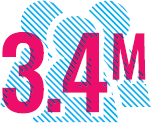 3.4 million people involved in WE Schools, WE Families, and WE Companies. |
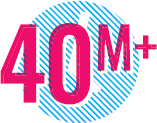 40+ million volunteer hours logged by students to earn their way into WE Day. |
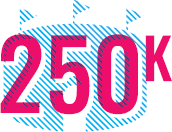 250,000 annually attend WE Day stadium celebrations, bringing together the movement in 16 stadiums. |
Around the World
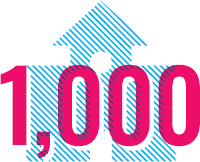 1,000 WE Villages schools and schoolrooms built around the world. |
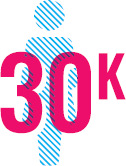 30,000 WE Villages businesses owned and operated by women around the world. |
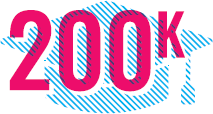 200,000 WE Villages children graduating primary school. |
 One million people in WE Villages with access to clean water and health care overseas. |
With our global development programs on stable footing and continuing to rapidly grow, our senior team and I paused to consider the next step in our mission.
As we entered our 20s, we realized just how much we benefited from our journey. In addition to finding our purpose, we were fortunate to forge lasting friendships and develop relationships with life-long mentors. Marc and I weren't particularly close when we were younger given the nearly six-year age gap, but our love for our work brought us together to forge a deeper bond. People speak of helping others as a thankless task; I don't understand that, having experienced an incredible journey. We realized we wanted to share those same opportunities with others.
In countless conversations, I've heard that my own desires to better the world are far from unique. But it's not easy for people to meaningfully engage with the old-school model of charity that, for the most part, is just a transaction. We wanted to empower individuals to make a real difference through everyday actions. In many ways, it would be a gift for the next 12-year-old who encounters injustice and wants to help be that change.
WE is incredibly proud of how our international work impacts communities. This video about one boy's dream to go to a WE School gets me every time. Click for video.
There are a lot of incredible WE Schools teachers, and we're always grateful to them. To see a a special surprise thank-you for one LA teacher from a WE Day celebrity, Click for video.
We continue our WE Villages global development programs, but we've also launched initiatives closer to home. We started a program for families to help raise socially conscious children, called WE Families, because our parents were our biggest champions. We created one for teachers, WE Schools, to bring service learning into the classroom, since all of our educators—Mr. Fedrigoni especially—changed our lives. We built WE Companies to enable social impact because we believe business is responsible for doing good, and will benefit by embracing purpose.
Now people come to the WE Movement to discover their cause and take more meaningful actions with educational resources, global service travel opportunities, inspirational events, and socially responsible products that support causes. Every year, more than 2,500 charities are helped by the millions of people who engage with WE.
During the course of writing this book, people have asked me what a business might possibly learn from a charity: why include our story here? Any company could learn from a startup (okay, school club) that grew into an organization with over $50 million dedicated annually to charitable projects. More fundamentally, purpose is the lifeblood of charity, and we can teach you how to leverage the power of purpose to make incredibly far-reaching social impact—and in the process achieve your business goals, even surpass them.
Likewise, some in the nonprofit sector have questioned why they should reach beyond the traditional charity blueprint. When studying the most pressing social issues, the world does not need small change; it needs massive impacts. Charities and social enterprises can learn from certain corporations that have built models to exponentially scale positive change, leveraged technology as accelerators, and driven massive innovation to transform our daily lives.
Building the WE Movement taught us that business is not the opposite of charity. A well-run charity is similar to a well-run business, the difference being that a charity measures success not in terms of dollars, but lives improved.
Business is not the opposite of charity.
Oprah first taught us the power of cross-sector partnerships. Using the best elements of purpose and profit from both camps, it's a lesson we have since used to develop many successful inter-sector marriages, including with KPMG, Microsoft, Allstate, Virgin Atlantic and many others. Through these collaborations, we created massive impact on pressing social causes, while also helping our corporate partners achieve their business objectives. You'll read about many of these partnerships here, throughout this book.
Frequent Flier Finds His True North
That was my childhood, more or less. If I sacrificed the ordinary, it was for extraordinary adventures. I traveled to the Middle East to deliver school supplies to Bedouin children. In Taiwan, I lived for a time in a Buddhist monastery where every morning we converged at dawn on a central temple lit by hundreds of candles.
After six years of dodging and then delaying completion of high school because of global travels, I was anxious for the next phase of my life to begin. I decided to pursue peace and conflict studies at the University of Toronto and, later, an executive MBA at Northwestern University's Kellogg-Schulich school of business to match Oprah's teachings. All the while, I volunteered full-time at WE (I was lucky to have full scholarships and fellowships throughout my undergraduate and postgrad studies). The organization is responsible for all the most important moments in my life. I first met my wife Leysa through WE Charity, and our friendship was built on our shared passion for social causes.
We started dating while she was living in New York, where she was working at Bellevue Hospital's Program for Survivors of Torture. She was pursuing her PhD in psychology, and I was crisscrossing the globe, making our time together rare and cherished. On our first official date, I took her to see the legendary Canadian poet and songwriter Leonard Cohen.
Our lives have never been normal; punctuated by my two failed attempts to propose due to flight cancellations. When I finally managed to get my act together, I spelled out “Will you marry me?” in flowers on the floor of my apartment, and I told her that no matter where I was in the world, she was home. Amazingly, she said yes.
Geography aside, Leysa and I have the most important things in common. We both work in the nonprofit sector and wrestle with our desire to make a positive impact around the world while trying to balance the need for a stable life—and a somewhat normal schedule. Finding that happy medium has recently been put into clearer focus as we welcomed our first child in the summer of 2017. Our boy Hilson was named after Leysa's great-great uncle, whose family immigrated to Canada from Ireland in 1810. More than 200 years ago, he established the now sixth-generation dairy farm where Leysa was born and raised. While we better understand the need for stability, we are more committed than ever to bettering the world our child will inherit.
Click here for embarrassing childhood photos from the WE archives
Notes

In the early days of our charity, Kailash Satyarthi, an Indian leader in the fight against child labor, was imprisoned for his activism. WE collected 3,000 signatures and sent the petition and a letter to the prime minister of India asking for his release—in a shoebox wrapped in brown packaging paper. The petition is pictured here, with me in the middle in blue.
After his release, Satyarthi called the petition “one of the most powerful actions taken on my behalf.” He would later go on to win the Nobel Peace Prize.

One of our early fundraising efforts—the soda booth was formerly our dog's house, and the poster boards were formerly our 6th grade science fair project.

Some of our greatest teachers have been children living and working in brick kilns, mines, garbage dumps, and on the streets. Even with what little they had, they learned to share and take care of each other, a lesson that stayed with us.
This is me with a group of street kids in Salvador de Bahia, Brazil.

During my trip to Southeast Asia as a kid, my itinerary happened to match that of the Canadian Prime Minister at the time, Jean Chrétien. After holding our own press conference to get his attention, he agreed to a brief meeting with me.
Here, I'm asking him to raise the issue of child labor during his trade delegation tour.

If I sacrificed much of my normal childhood, it was for extraordinary opportunities to learn, grow, and to make a positive impact. In my travels, I met many inspiring people. This is me with Mother Teresa at the Mother House in Calcutta.

Our parents turned their lives upside down for us. More than that, they gave us their trust and respect, enough to explore the world and our passions, something for which we will be forever grateful.

Marc and I appeared on The Oprah Winfrey show a few times after Oprah became involved with our programming. We are grateful for her incredible mentorship.

Our lives have never been normal; punctuated by my two failed attempts to propose due to flight cancellations. When I finally managed to get my act together, I spelled out “Will you marry me?” in flowers on the floor of my apartment, and I told Leysa that no matter where I was in the world, she was home.

Our boy Hilson was named after Leysa's great-great uncle, whose family immigrated to Canada from Ireland in 1810.

Leysa and I are more committed than ever to bettering the world our child will inherit.

Marc, Holly and I with Price Harry at WE Day UK.
